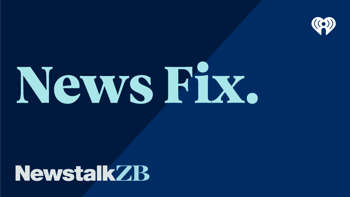Wellington’s world-famous ecosanctuary could soon be bordered by a minerals prospecting site, with applications being considered for gold exploration next door.
The Ministry of Business, Innovation and Employment (MBIE), which is responsible for managing permits, has received an application for gold prospecting over 1.4sq km of land in the Wellington hills, including a large block directly bordering Zealandia’s sanctuary fence.
The application for the operation named “Golden Hills 2.0” was submitted at the end of June and is currently under evaluation.

Urban oasis: The Lower dam lake at Wellington's Zealandia. Photo / File
MBIE’s publicly listed permits reveal a number of other separate applications are being considered for prospecting on nearby land between Zealandia and the coast.
It totals more than 8sq km of land potentially up for searching for gold and other minerals.
Another permit has already been approved, with a company named Quicksand Ltd given the green-light for mineral prospecting last month.
The applicants for the Golden Hills 2.0 permit, which are still being considered, are listed as Samuel and Joanna Watson.
The permit applications are situated on land across Long Gully Station, a 830ha parcel of land that stretches over Wellington’s hills between the city and the coast.
The station is owned by the Watson family, who would not comment on the prospecting plans when contacted by the Herald.

MBIE national manager for petroleum, minerals and offshore renewable energy John Buick-Constable told the Herald New Zealand Petroleum and Minerals (NZP&M) does not comment on applications under evaluation.
Buick-Constable said the agency has granted a permit targeting gold to operator Quicksand Limited for a period of two years.
“A further eight applications from various applicants for Minerals Prospecting Permits also targeting gold have been received for neighbouring or near-by acreage”.
“Prospecting is the very first step in exploring for mineral deposits and typically involves activities of minimal impact. These can include literature searches, geological mapping, hand sampling and/or aerial surveys”.
Permits are issued under the Crown Minerals Act (CMA), he said, which grants the permit holder “the exclusive right to prospect, explore or mine for specified minerals”.
“Before a permit can be granted the Minister for Resources or the delegated decision-maker under the CMA must be satisfied the applicant is highly likely to be able to meet the requirements for a permit. This considers the applicant’s financial capability, technical capability, compliance record, and high-level capability to meet health and safety and environmental legislation.”
Neighbouring properties or the environmental impact are not considered in the issuing of permits, he said.
“But should the proposed activities require resource consent, those things would likely be considered during that consenting process.”
The permits do not necessarily grant access to the area of the permit if it is privately owned, the permit holder must independently obtain permission from the landowner to access the area for prospecting.
Zealandia is owned by Wellington City Council, which would not comment on the potential for prospecting nearby.
Wellington Mayor Tory Whanau has slammed the granting of a permit as “short-sighted”.
Whanau said it is evidence of the Government prioritising business interests over the environment.
“This potentially paves the way for future exploration and mining that would deal a catastrophic blow to our city’s conservation efforts, harm our city’s thriving biodiversity, and roll back decades of hard-won progress,” Whanau said.
“We must not allow this to happen; I urge all Wellingtonians to protest this decision and stand up for the future of our city’s environment”, Whanau said.
A Wellington City Council spokesman said the council has been made aware of “allegations of mining activity and major earthworks at this site”, and is very concerned.
“We are investigating the matter and the enforcement options available if needed,” the spokesman said.
It comes as the price of gold has reached record levels.
Economic uncertainty is being credited for driving the so-called “safe haven” asset above US$3600 ($6000) an ounce.

Zealandia was once farmland before being converted into a a 225 hectare conservation project. Photo / WellingtonNZ
Zealandia was named the top tourism operation in the country for 2023 at the New Zealand Tourism Awards.
The conservation project, spanning 225ha of land surrounded by an 8.6km wire mesh fence, has introduced 18 species of native wildlife back into the area, some of which were previously absent from mainland New Zealand for over 100 years.
It has made global headlines since opening in 2000 as the world’s first fully fenced ecosanctuary with the ambitious goal to restore the areas forest and freshwater ecosystems to a pre-human state by keeping out introduced predators.

Boris Johnson inspects a tuatara at Zealandia in Wellington in 2017. Photo / Marty Melville
It was the first site to establish a wild population of tuatara on the mainland after the species was driven nearly to extinction in the North and South islands.
Wellington’s hills have been scoured for gold before, with alluvial gold first found in 1986 in the Kaiwharawhara stream, near where the Karori tunnel is now.
Prospecting continued in the area but poor returns meant it was abandoned before long.
Zealandia would not comment on the prospecting applications.
Ethan Manera is a Wellington-based journalist covering Wellington issues, local politics and business in the capital. He can be emailed at [email protected].
Take your Radio, Podcasts and Music with you










